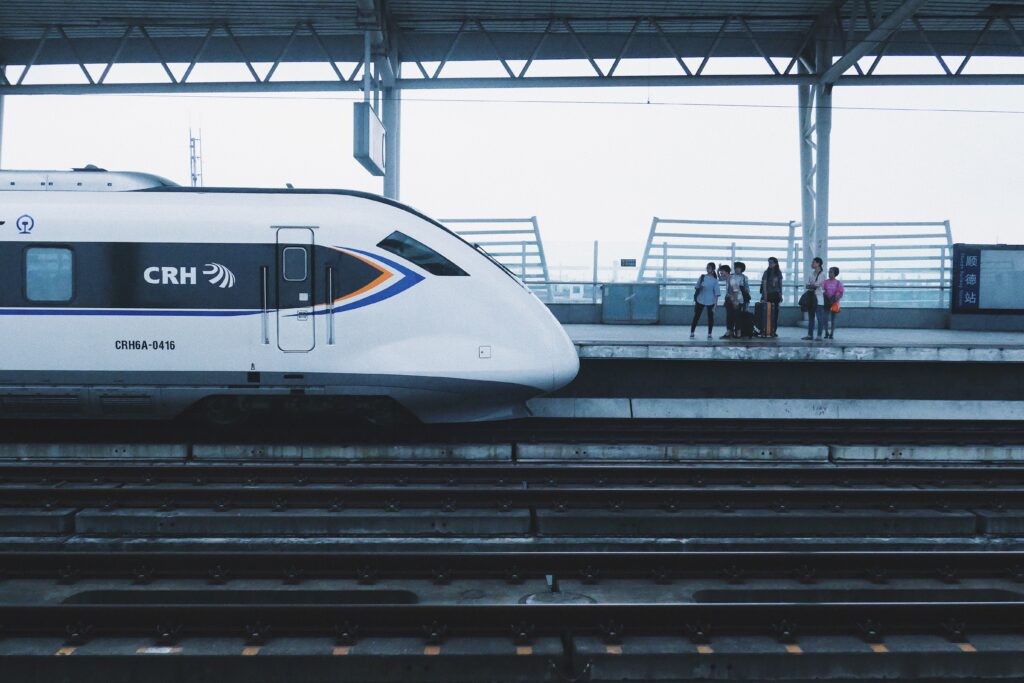The federal government just allocated $1.4 billion from the Bipartisan Infrastructure Act to support rail infrastructure projects nationwide. Seventy projects in 35 states and Washington, D.C., are recipients of the funding. This year’s allocation is the largest that has ever been dispensed partly because of disruptions in the supply chain caused by COVID-19. The federal funding will support track repair, rail upgrades, bridge work and construction of new rail lines and facilities.
Aging and outdated railroads limit speed and weight, so the upcoming modernization projects will deliver faster railways and increase the efficiency of economic exchanges. Many of the projects funded will involve replacing older railways more prone to breakage and derailments.
These rail modernization initiatives will not only increase safety but will also bolster the national economy. At the same time, they signal massive new opportunities for private sector contractors.
Massachusetts received $108 million, covering 80% of the project’s total cost, to deliver new intercity passenger rail service routes. The project will include a new rail track between Springfield and Worcester and upgrade other tracks and signals so passenger trains can travel at speeds up to 80 mph. Additionally, a second passing track for about 23 miles of the route will be constructed so that more trains can use the rail corridor.

California’s High-Speed Rail Authority received $202 million for a project to create six rail-grade separations in Shafter, California. This funding is also from the Bipartisan Infrastructure Act. It will cover construction costs and right-of-way acquisitions required. The project will include locating grade separations at six road-rail intersections either above or below the railway to promote efficiency for commuters and eliminate traffic buildup at rail crossings. This will improve safety by eliminating the risks of crossing paths with trains traveling 220 miles per hour.
The Pennsylvania Department of Transportation (PennDOT) has finalized a formal agreement with Norfolk Southern Corporation to expand passenger rail service on the Amtrak line in Western Pennsylvania. With federal support, the commonwealth will invest more than $200 million in railway and safety improvements. Currently, the Pennsylvanian Amtrak service travels roundtrip between New York City and Pittsburgh via Harrisburg once daily. Once completed, this project will facilitate rail service twice daily. The project will include track and signal improvements at five stations – Pittsburgh, Johnstown, Portage, Altoona and Harrisburg – and sidetracks to allow freight trains to move out of the way for passenger trains. Construction is slated for 2024.
A project to reconstruct 37 miles of the Sisseton Milbank Railroad in South Dakota has received $24.7 million in funding. It will provide the majority of a new project’s $28 million price tag. State funds will cover the rest. The Sisseton Milbank Railroad is a crucial conduit for commodities such as wheat, corn, soybeans, fertilizers and plastics. Still, the current deteriorated condition of the rail tracks limits train speed to 5 miles per hour. There is also a concerning pattern of one train derailment per year due to tracks being unsafe. To address this issue, the project will focus on rebuilding damaged sections of the railroad and replacing the outdated 75-pound rails with modern 115-pound rails. This upgrade will enable freight engines to travel faster and more securely.
The Federal Railroad Administration, in tandem with the Minnesota, Wisconsin and Illinois Departments of Transportation, made $53 million in funding available for a project that will benefit all three states. Currently in the design phase, the Twin Cities-Milwaukee-Chicago Intercity Passenger Rail Project has slated a construction start date for 2024. The project will create a new passenger rail path that runs parallel to the 411-mile rail corridor connecting the Twin Cities, Milwaukee and Chicago. Repairs, rehabilitation, and upgrades to several stations at both northern and southern junctions will also be included.
The Metropolitan Transit Authority (MTA) has approved an environmental review of a massive project – the Interborough Express light rail project. The $5.5 billion project will link Brooklyn and Queens in New York. Following the environmental review, design work will begin. The MTA has said that the project will connect 17 different subway lines and serve about 115,000 average daily riders. The light rail line will be the first in the MTA system. Construction within the right-of-way will likely require shifting the freight rail tracks to allow a pair of parallel light-rail tracks. That will necessitate replacing 45 bridges and that additional effort could potentially call for private sector investment.
An award of $42.5 million in new federal funding will allow California’s Capitol Corridor Joint Powers Authority to launch the first phase of the Sacramento to Roseville Third Track Project. The project, slated for a construction launch in 2024, will construct 10 miles of third track alongside the current Sacramento to Roseville passenger line and build a new servicing facility at the Roseville end of the line. The third rail will provide a new and reliable mode of transportation that will allow trips between Sacramento and Roseville. The improvements will allow for more round trips daily between the cities. Eventually, there are plans for 10 round trips daily carrying up to 600 passengers each trip.
It should be noted that this type of federal funding for infrastructure projects is currently available in abundance. Private sector contractors, equipment providers, engineering firms, and leading-edge technology service companies will be in high demand for the next several years. After that, private sector investors will likely be in high demand as well because there will still be hundreds of critical infrastructure needs in America.

As President and CEO of Strategic Partnerships, Inc., Mary Scott Nabers has decades of experience working in the public-private sector. A well-recognized expert in the P3 and government contracting fields, she is often asked to share her industry insights with top publications and through professional speaking engagements. Get an exclusive look at upcoming trends and insider tips from Mary herself on the SPI blog.
Tags: Bipartisan Infrastructure Act, California, Chicago, High Speed Rail, High Speed Rail Authority, Intercity Passenger Rail Project, Mary Scott Nabers, Massachusetts, Milwaukee, new funding, New York, outdated railways, private sector opportunities, Queens, South Dakota, Strategic Partnerships






 RSS Feed
RSS Feed